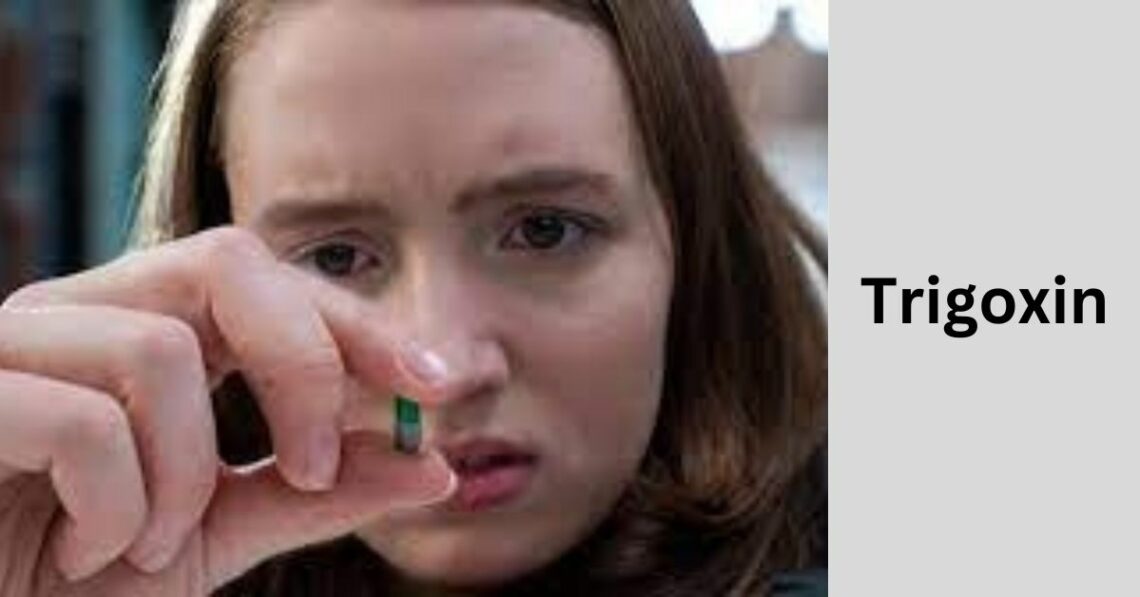
Unraveling Trigoxin: Fictional Drug or Real Medical Inspiration?
The Hulu original film “Run” has captivated audiences with its suspenseful plot, compelling characters, and a mysterious green pill called Trigoxin.
Viewers have been left wondering whether Trigoxin is a real drug and if the green pill has any basis in reality. In this exploration, we delve into the intriguing world of “Run” and investigate the parallels between Trigoxin and actual medications.
Trigoxin and Digoxin: A Fictional Twist on a Real Drug
In the movie, Sarah Paulson’s character, Diane, administers Trigoxin to her daughter, Chloe, claiming it to be a heart medication. Interestingly, Trigoxin bears a striking resemblance to the real-life drug Digoxin.
Digoxin, according to Mayo Clinic, is used to enhance the strength and efficiency of the heart, controlling the heart rate and rhythm for improved blood circulation. The fictional Trigoxin, therefore, seems to draw inspiration from the pharmacological effects of Digoxin.
While the movie takes creative liberties with the name and potentially the details, the portrayal of Trigoxin as a heart medication aligns with the actual purpose of Digoxin in cardiovascular medicine. The use of a similar-sounding but fictional drug adds an extra layer of intrigue to the storyline.

The Green Pill Mystery: Lidocaine and Creative Direction
The enigmatic green pill, a source of tension and revelation in “Run,” is revealed by a pharmacist to be a muscle relaxant for dogs, causing Chloe to question her mother’s intentions. The green pill appears to have parallels with Lidocaine, a real drug used as a local anesthetic for various purposes.
According to the pharmacist in the movie, the green pill resembles Lidocaine, which is prescribed to reduce canine leg pain or discomfort caused by sunburns, bites, or cuts.
Lidocaine, as documented by the National Center for Biotechnology Information, can induce numbness and is used in various forms such as jelly, ointment, spray, or injections into the body.
However, the creative direction taken by the writers introduces a fictional element – the pill form of Lidocaine. While Lidocaine is commonly administered in different forms, the green pill in “Run” seems to be a fabrication for dramatic effect.
Trigoxin’s Inspiration from Digoxin:
Digoxin, the real drug that seems to inspire the fictional Trigoxin, is primarily used to treat conditions like heart failure and atrial fibrillation. It achieves its effects by influencing the electrical activity of the heart and enhancing its pumping ability.
In “Run,” the choice to create a drug with a name reminiscent of Digoxin adds a layer of authenticity to the narrative. The film’s creators likely wanted to draw on the familiarity of real-world medications to make the story more relatable to audiences, even as they took creative liberties with the drug’s name and potentially its properties.
UNLEASHING YOUR POTENTIAL: THE ROLE OF A WRITING COACH
The Green Pill’s Connection to Lidocaine:
The green pill’s revelation as a muscle relaxant for dogs introduces a parallel with Lidocaine, a drug commonly used in both veterinary and human medicine. Lidocaine’s primary function as a local anesthetic aligns with the narrative, as Chloe discovers that her mother has been using this drug for her dog.
However, the shift from traditional forms of Lidocaine administration, such as jelly, ointment, or injections, to a pill form appears to be a deliberate divergence from reality for cinematic impact. This creative decision adds an element of surprise and tension to the plot while maintaining a connection to real-world pharmaceutical practices.
Exploring Trigoxin’s Potential Side Effects:
Given the revelation that Trigoxin is not the heart medication it claims to be, the film could explore potential side effects associated with the ingestion of a muscle relaxant meant for dogs.
While the movie hints at leg paralysis as a consequence, it is essential to recognize that the actual effects of such substances on humans can be far more complex and severe.

This fictional element introduces an ethical dimension, raising questions about the consequences of medical deception and the potential harm caused by administering drugs without proper knowledge.
The Impact of Medical Deception on Characters:
As the plot unfolds, the impact of Diane’s deception regarding Trigoxin becomes a central theme. The revelation that Chloe has been ingesting a drug meant for dogs shatters her trust in her mother and prompts a reevaluation of their entire relationship.
This storyline allows the film to delve into the psychological and emotional ramifications of medical deception within a family context.
UNDERSTANDING AND RESOLVING ZELLE PAYMENT FAILURES
By exploring the characters’ reactions and the aftermath of this revelation, “Run” can offer a nuanced portrayal of the consequences that extend beyond the physical implications of the fictitious Trigoxin and the green pill.
Legal and Ethical Implications:
The use of a fictional drug like Trigoxin in “Run” also raises intriguing questions about the legal and ethical boundaries of medical storytelling. While the film is a work of fiction, the portrayal of pharmaceuticals and medical conditions carries a responsibility to accurately inform the audience.
Introducing a drug with a name similar to a real medication may inadvertently create confusion or misinformation among viewers. This artistic choice prompts a broader discussion about the ethical considerations in depicting medical scenarios in entertainment. It highlights the fine line between creative storytelling and the potential impact on public understanding of health-related matters.
Audience Awareness and Real-world Implications:
As “Run” continues to captivate audiences, the awareness surrounding fictional drugs like Trigoxin can extend beyond the screen. Viewers may find themselves questioning the authenticity of medications and researching the actual drugs that inspired the narrative.
This engagement with medical themes in entertainment underscores the public’s interest in health-related content and its potential to spark discussions about pharmaceutical practices. While Trigoxin and the green pill may be products of imagination, they serve as catalysts for conversations around the intersection of fiction and reality in the realm of medicine, encouraging a more informed and critical approach to health-related storytelling.
the NSCorp mainframe stands as a testament to the pivotal role of technology in modern rail operations.
Conclusion:
“Run” weaves a gripping narrative around the mysterious Trigoxin and the green pill, keeping viewers on the edge of their seats. While both substances appear to be fictional, they bear resemblances to real medications, adding a touch of realism to the cinematic experience.
The parallels with Digoxin and Lidocaine offer a glimpse into the creative process behind the movie, where reality and fiction intertwine to create a captivating story. As the intrigue surrounding Trigoxin unfolds on screen, audiences are left to ponder the fine line between imagination and medical inspiration in the world of “Run.”
You May Also Like

8 Damages a Car Accident Lawyer Can Help You Get Compensation For
October 2, 2023
Goku.to: Empowering the Materialization of Son Goku’s Legacy
December 20, 2023

